
AUCTION AT SOTHEBY'S LONDON (1 MAY 2019) Arts of the Islamic World
Apr 09, 2019 EVENT, Art Auction
 A rare and important Iznik Golden Horn Pottery Dish, Turkey, circa 1530 (est. £300,000-500,000) / Courtesy of Sotheby's
A rare and important Iznik Golden Horn Pottery Dish, Turkey, circa 1530 (est. £300,000-500,000) / Courtesy of Sotheby's
This rare intact example of Iznik Golden Horn pottery represents an opportunity to acquire one of the last examples of the unusual style remaining in private hands. Last offered at Sotheby's in 1986 - when it was also the cover of the catalogue - the remarkable piece has remained in a private collection since.
Predominantly decorated with a series of floral concentric spirals, the motif of the group does not seem to evolve from an Iznik antecedent. Rather, the inspiration for the design seems to come from contemporary illumination, namely, Imperial illumination found on the background of Sultan's tugra, the calligraphic monogram, seal or signature that was created, issued and controlled solely by the Ottoman Imperial Chancery in the Topkapi Palace.
The wares take their name from a waterway on the southern shores of Istanbul, after a selection of fragments discovered in the early twentieth century during excavations. One of the most famous pieces of ‘Golden Horn’ is the Godman Flask, dating 1529, which is in the collection of the British Museum.
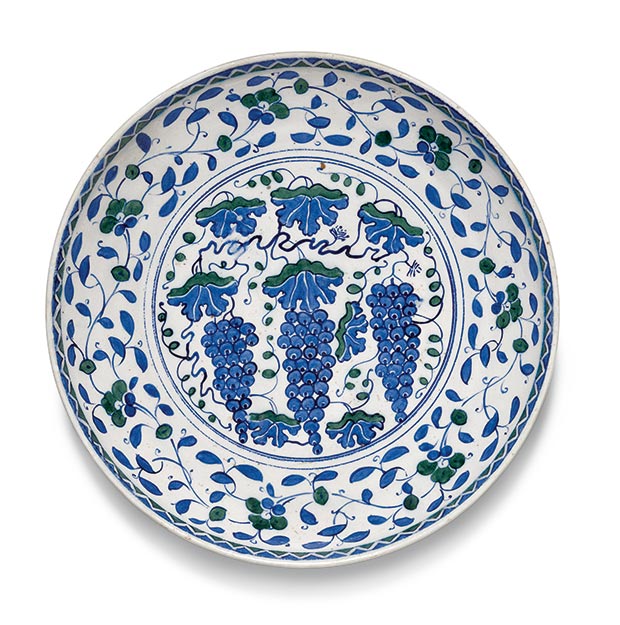 An Iznik blue and green pottery 'grape' dish, Turkey, circa 1565 / Courtesy of Sotheby's
An Iznik blue and green pottery 'grape' dish, Turkey, circa 1565 / Courtesy of Sotheby's
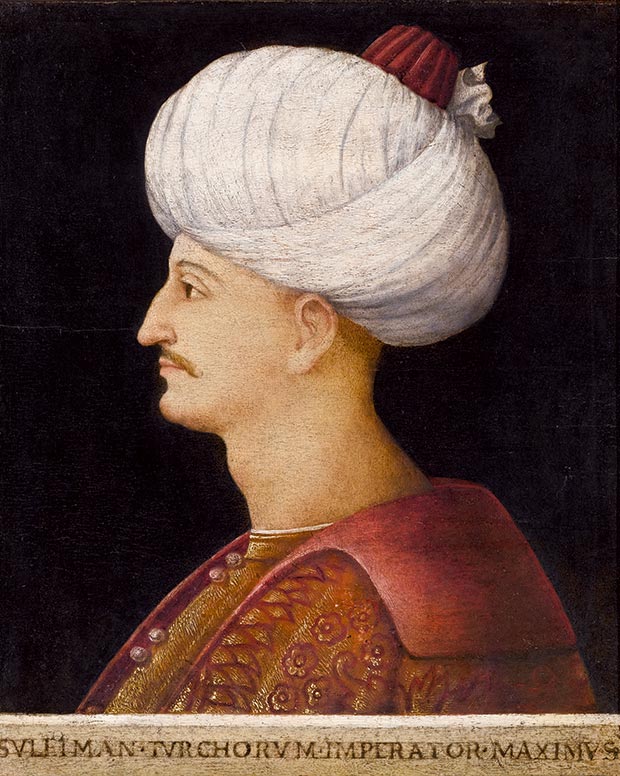 A portrait of Suleyman the Magnificent, by a follower of Gentile Bellini, Italy, probably Venice, circa 1520 / Courtesy of Sotheby's
A portrait of Suleyman the Magnificent, by a follower of Gentile Bellini, Italy, probably Venice, circa 1520 / Courtesy of Sotheby's
When he came to power in 1520, Suleyman II inherited a vast empire and was responsible for turning Constantinople, now Istanbul, into an important intellectual centre. He became known locally as the Lawgiver, due to his important legal reformations, and provoked fascination in Europe through his military conquests, prodigious administrative restructuring and keen artistic patronage. One of the few Western images of an Eastern potentate by a European artist, this landmark portrait of Suleyman the Magnificent likely served as a primary source of inspiration for many later portraits, drawings, prints and medals of the Sultan.
Suleyman does not seem to have commissioned any portraits, and so details of his physical appearance were likely conveyed to European artists through sketches created by those who had accompanied foreign embassies to the Ottoman court. Indeed, it is very likely that either Andrea Gritti or his son Alvise Gritti was the patron behind this portrait. Before being elected Doge of Venice in 1523, Andrea spent most of his life in Constantinople as a merchant and diplomat looking after Venetian interests. His son Alvise, born to an Ottoman woman with whom Andrea had an affair, played an important political role as an advisor in the Ottoman state. Passionate about the arts, Alvise promoted a number of architects and artists such as Jacopo Sansovino and Titian.The earliest-known surviving depictions of Suleyman include a drawing by Albrecht Durer in the Musee Bonnat, Bayonne, and a copper plate print by Italian lithography master ‘A.A’ in the Graphische Sammlung Albertina, Vienna. This portrait bears striking similarities to both illustrations from the shape of his turban and the large drooping collar of his robe to his aquiline nose and protruding chin.
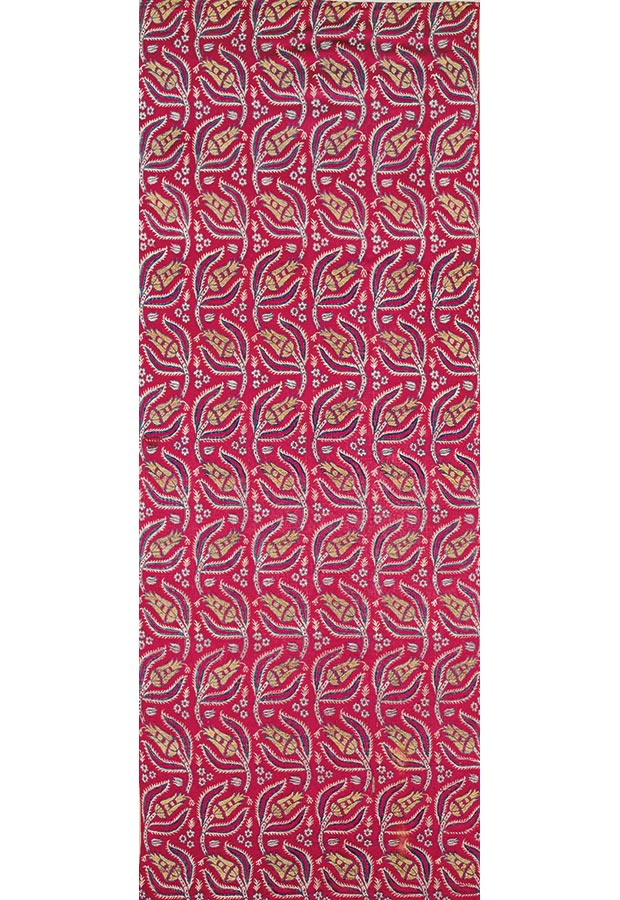 An Ottoman brocade Kemha panel with undulating tulips, Turkey, 16th century / Courtesy of Sotheby's
An Ottoman brocade Kemha panel with undulating tulips, Turkey, 16th century / Courtesy of Sotheby's
From the fabled Kelekian Collection in Paris, this beautiful Ottoman brocade panel is woven with stylised tulips on swaying stems with two rows alternately leaning in opposite directions, a design which can be found in textiles in the Metropolitan Museum of Art, New York and in the Topkapi Museum, Istanbul.
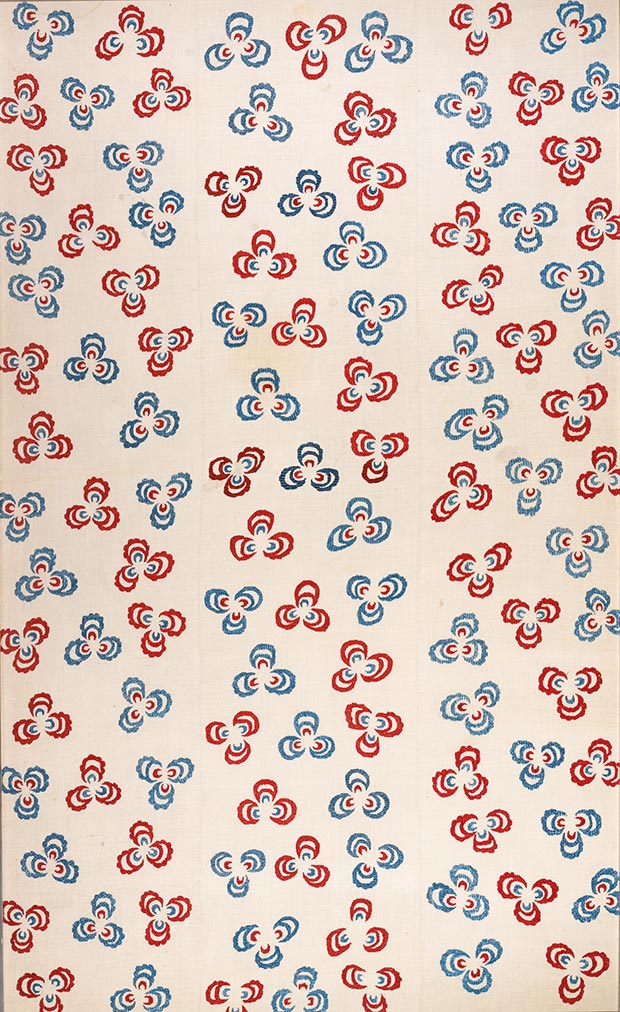 An Ottoman 'cintamani' embroidered quilt cover or curtain, Turkey, late 17th century (est. £20,000-30,000) / Courtesy of Sotheby's
An Ottoman 'cintamani' embroidered quilt cover or curtain, Turkey, late 17th century (est. £20,000-30,000) / Courtesy of Sotheby's
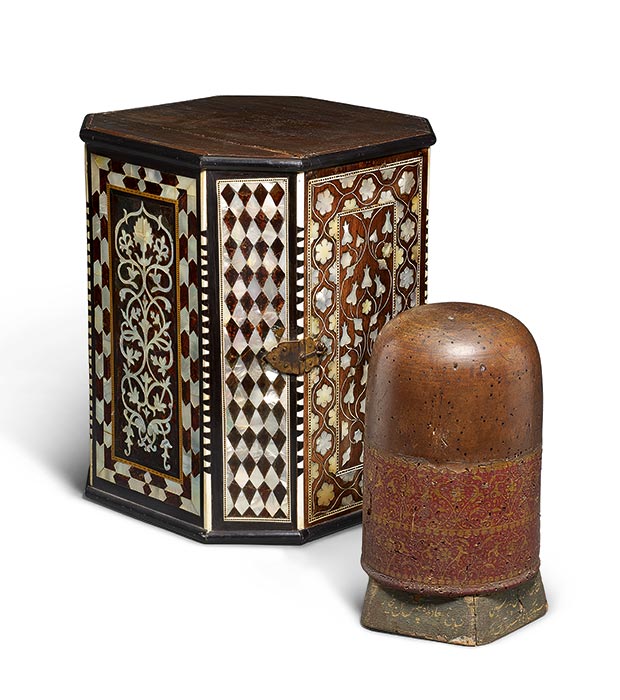 An Ottoman painted wood turban stand with the tortoiseshell and ivory-inlaid case, Turkey, 18th century / Courtesy of Sotheby's
An Ottoman painted wood turban stand with the tortoiseshell and ivory-inlaid case, Turkey, 18th century / Courtesy of Sotheby's
This stylish decorative turban stand is carefully inscribed with romantic stanzas from the Ottoman Turkish poet Mahtumi Vahidi: “like the turban, your place is on top of my headâ€. Important in signalling rank and status, turbans were key in establishing social groupings in Ottoman court scenes, and through their place in literature, appear to hold authority and grandeur of their own. It can thus be deduced that a turban indicating high rank would have enjoyed storage and display of the calibre witnessed in this piece.
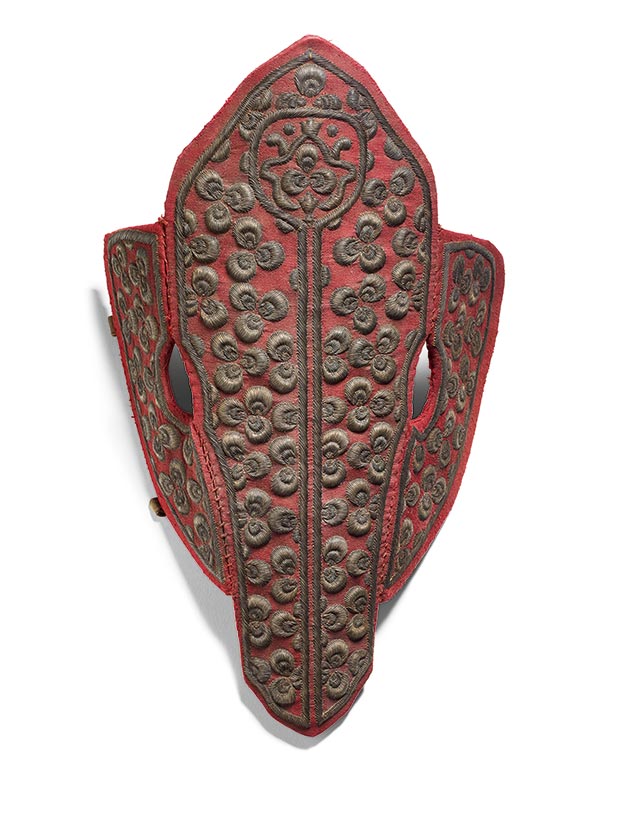 An Ottoman metal-thread embroidered horse chamfron, Turkey, circa 1900 / Courtesy of Sotheby's
An Ottoman metal-thread embroidered horse chamfron, Turkey, circa 1900 / Courtesy of Sotheby's
A selection of precious gem-set and enamelled jewels from India testify to the sophisticated wealth of the Maharajas and their entourage. Six of the lots offered in the sale belong to the family of Hari Singh Nalwa (1791-1837).
,-India,-probably-Deccan_19th-century.jpg) An important gem-set and enamelled turban ornament (Sarpech), India, probably Deccan, 19th century / Courtesy of Sotheby's
An important gem-set and enamelled turban ornament (Sarpech), India, probably Deccan, 19th century / Courtesy of Sotheby's
Only the Mughal emperor, his family and other Indian royalty were permitted to wear a royal turban ornament. Retaining their imperial connotations, such headwear was considered a mark of honour for important occasions and continued to hold its mark of prestige as notable examples entered British aristocratic collections.
_Morocco_late-18th-century.jpg) A large gem-set and enamelled gold eagle pendant necklace (Lebba), Morocco, late 18th century / Courtesy of Sotheby's
A large gem-set and enamelled gold eagle pendant necklace (Lebba), Morocco, late 18th century / Courtesy of Sotheby's
This eagle-shaped pendant, inlaid with colourful gemstones and skilfully decorated with red, turquoise and green polychrome enamel on the reverse, would have been made for a bride-to-be in Morocco.
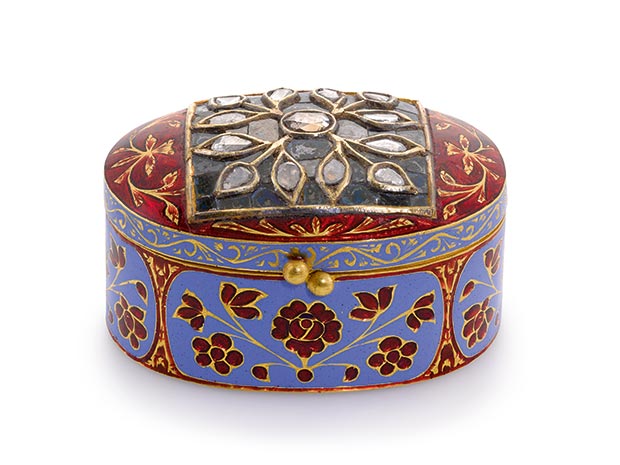 A gem-set and enamelled box. North India, 19th century / Courtesy of Sotheby's
A gem-set and enamelled box. North India, 19th century / Courtesy of Sotheby's
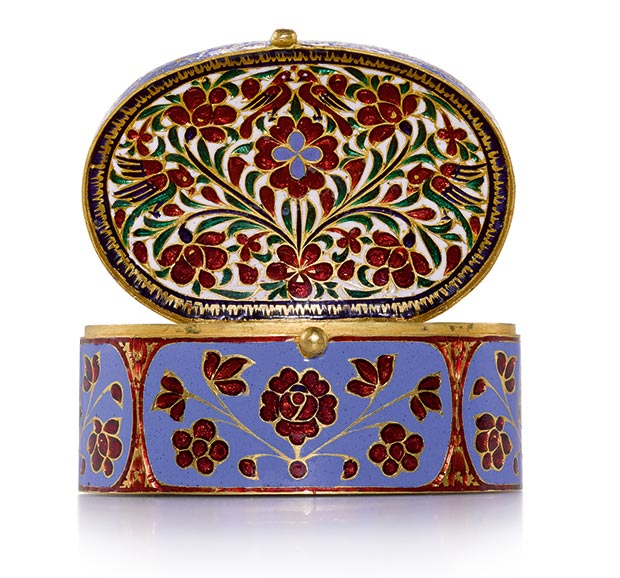 A gem-set and enamelled box opened. North India, 19th century / Courtesy of Sotheby's
A gem-set and enamelled box opened. North India, 19th century / Courtesy of Sotheby's
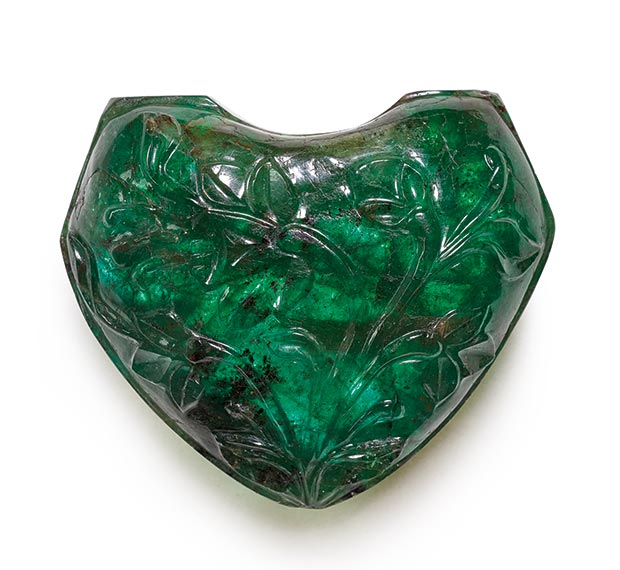 A large carved emerald, North India, circa 1800 / Courtesy of Sotheby's
A large carved emerald, North India, circa 1800 / Courtesy of Sotheby's
_India_Jaipur_19th-century.jpg) An enamelled and diamond and pearl-set torque (hasli), India, Jaipur, 19th century / Courtesy of Sotheby's
An enamelled and diamond and pearl-set torque (hasli), India, Jaipur, 19th century / Courtesy of Sotheby's
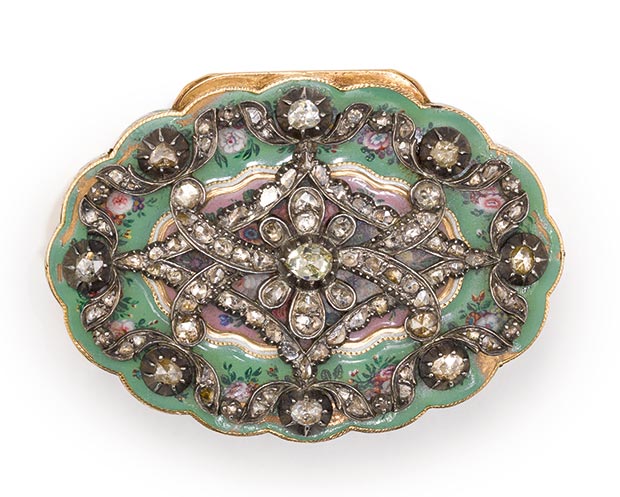 An enamelled and diamond-set box, Swiss for the Ottoman market, circa 1835 / Courtesy of Sotheby's
An enamelled and diamond-set box, Swiss for the Ottoman market, circa 1835 / Courtesy of Sotheby's
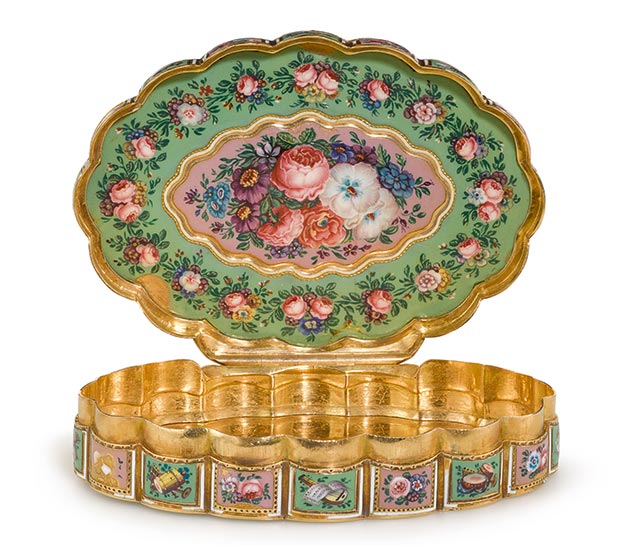 An enamelled and diamond-set box opened. Swiss for the Ottoman market, circa 1835 / Courtesy of Sotheby's
An enamelled and diamond-set box opened. Swiss for the Ottoman market, circa 1835 / Courtesy of Sotheby's
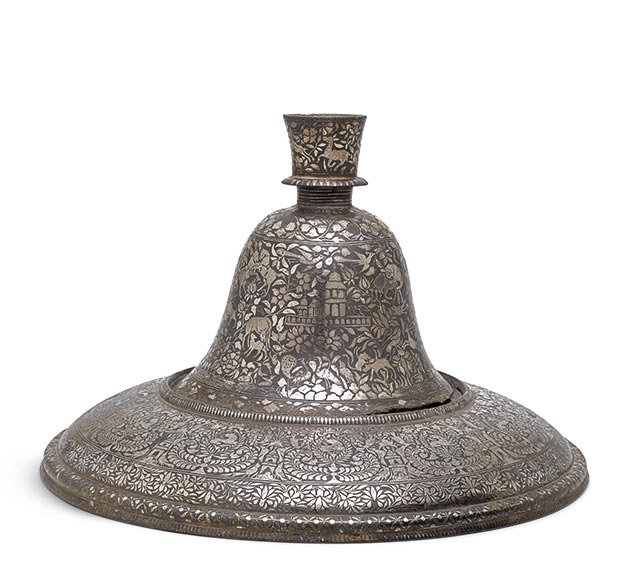 A bidri silver-inlaid huqqa base on the wide stand, India, early 18th century / Courtesy of Sotheby's
A bidri silver-inlaid huqqa base on the wide stand, India, early 18th century / Courtesy of Sotheby's
 An illuminated Qur'an, probably Shiraz, Persia, Safavid, second half of 16th century / Courtesy of Sotheby's
An illuminated Qur'an, probably Shiraz, Persia, Safavid, second half of 16th century / Courtesy of Sotheby's
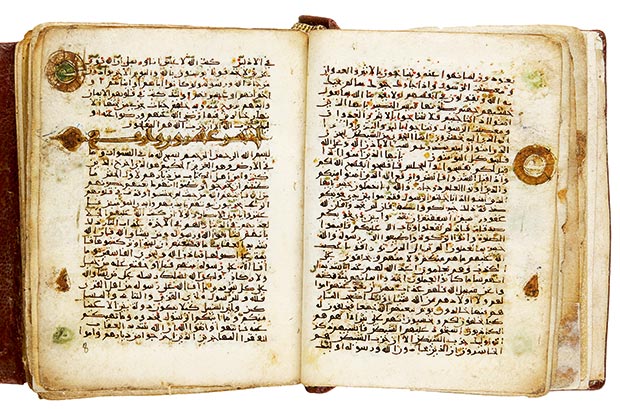 A fine and rare miniature Quran on vellum, North Africa, Near East or Persia, 10th century AD / Courtesy of Sotheby's
A fine and rare miniature Quran on vellum, North Africa, Near East or Persia, 10th century AD / Courtesy of Sotheby's
This fascinating miniature manuscript is an extremely rare and early example of Eastern Kufic script written in a vertical format on vellum.
The sale presents an important private collection of arms and armour, displaying the extraordinary variety of weaponry used throughout the Islamic world.
-and-scabbard_France-or-Russia_19th-century.jpg) A turquoise-set sword (Kilij) and scabbard, France or Russia, 19th century / Courtesy of Sotheby's
A turquoise-set sword (Kilij) and scabbard, France or Russia, 19th century / Courtesy of Sotheby's
This sword belongs to a rare group, characterised by the profuse use of cut-turquoise in combination with an elegant design of split palmettes or arabesques in gilt and niello, that can be traced back to the same workshop with outlets both in Paris and St Petersburg.
_India_late-18th-century.jpg) Left: A Mughal gem-set jade-hilted dagger (khanjar), India, late 18th century / Right: Mughal gem-set jade-hilted dagger (khanjar), India, late 18th century - 19th century / Courtesy of Sotheby's
Left: A Mughal gem-set jade-hilted dagger (khanjar), India, late 18th century / Right: Mughal gem-set jade-hilted dagger (khanjar), India, late 18th century - 19th century / Courtesy of Sotheby's
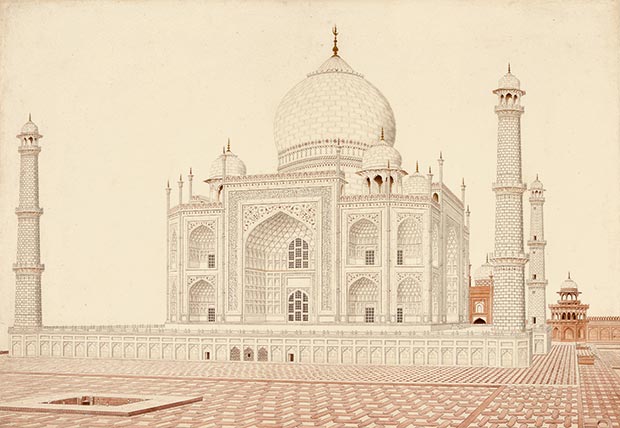 A view of the Taj Mahal from the West looking East, Company School, circa 1813, 58 by 79.5cm / Courtesy of Sotheby's
A view of the Taj Mahal from the West looking East, Company School, circa 1813, 58 by 79.5cm / Courtesy of Sotheby's
Comments
Add a comment
Commenting is not available in this section entry.